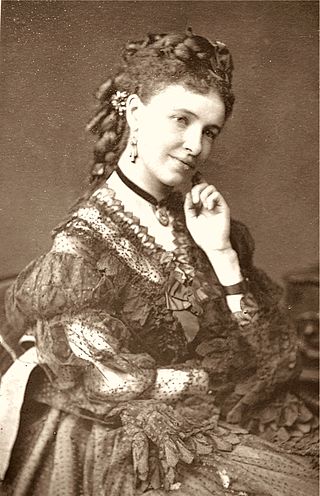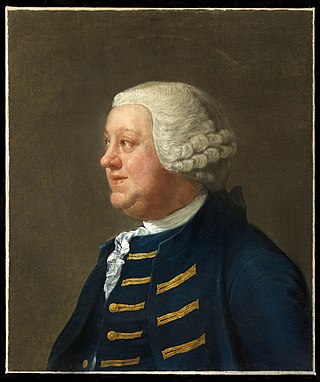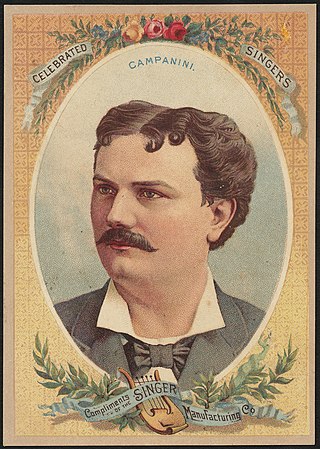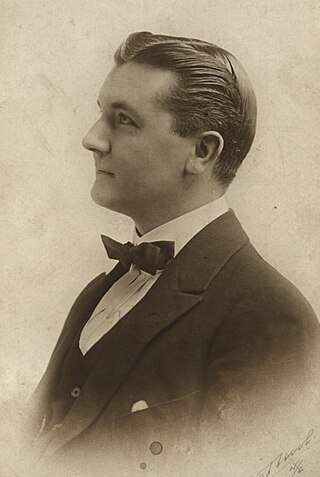
Dame Emma Albani, DBE was a Canadian-British operatic first coloratura soprano then spinto soprano and dramatic soprano of the 19th century and early 20th century, and the first Canadian singer to become an international star. Her repertoire focused on the operas of Mozart, Rossini, Donizetti, Bellini and Wagner. She performed across Europe and North America.

The Salzburg Festival is a prominent festival of music and drama established in 1920. It is held each summer, for five weeks starting in late July, in Salzburg, Austria, the birthplace of Wolfgang Amadeus Mozart. Mozart's operas are a focus of the festival; one highlight is the annual performance of Hofmannsthal's play Jedermann (Everyman).
Glocalization or glocalisation is the "simultaneous occurrence of both universalizing and particularizing tendencies in contemporary social, political, and economic systems". The concept comes from the Japanese word dochakuka and "represents a challenge to simplistic conceptions of globalization processes as linear expansions of territorial scales. Glocalization indicates that the growing importance of continental and global levels is occurring together with the increasing salience of local and regional levels."

John Rich (1692–1761) was an important director and theatre manager in 18th-century London. He opened The New Theatre at Lincoln's Inn Fields in 1714, which he managed until he built the Theatre Royal, Covent Garden in 1732. He managed Covent Garden until 1761, putting on ever more lavish productions. He popularised pantomime on the English stage and played a dancing and mute Harlequin himself from 1717 to 1760 under the stage name of "Lun." Rich's version of the servant character, Arlecchino, moved away from the poor, dishevelled, loud, and crude character, to a colourfully-dressed, silent Harlequin, performing fanciful tricks, dances and magic. Rich's decision to be a silent character was influenced by his unappealing voice, of which he was well aware, and the British idea of the Harlequin character was heavily inspired by Rich's performances.

His Majesty's Theatre is a West End theatre situated in the Haymarket in the City of Westminster, London. The building, designed by Charles J. Phipps, was constructed in 1897 for the actor-manager Herbert Beerbohm Tree, who established the Royal Academy of Dramatic Art (RADA) at the theatre. In the early decades of the 20th century Tree produced spectacular productions of Shakespeare and other classical works, and the theatre hosted premieres by such playwrights as Bernard Shaw, J. M. Synge and, later, Noël Coward and J. B. Priestley. Since the First World War the wide stage has made the theatre suitable for large-scale musical productions, and His Majesty's has accordingly specialised in hosting musicals. It has been home to record-setting musical theatre runs such as the First World War hit Chu Chin Chow and Andrew Lloyd Webber's The Phantom of the Opera, which has run at His Majesty's since 1986, except during the COVID-19 pandemic theatre closures.

The Royal Opera is a British opera company based in central London, resident at the Royal Opera House in Covent Garden. Along with English National Opera, it is one of the two principal opera companies in London. Founded in 1946 as the Covent Garden Opera Company, the company had that title until 1968. It brought a long annual season and consistent management to a house that had previously hosted short seasons under a series of impresarios. Since its inception, it has shared the Royal Opera House with the dance company now known as The Royal Ballet.

Sir Augustus Henry Glossop Harris was a British actor, impresario, and dramatist, a dominant figure in the West End theatre of the 1880s and 1890s.

La Calisto is an opera by Francesco Cavalli from a libretto by Giovanni Faustini based on the mythological story of Callisto.

The Teatro San Cassiano was the world's first public opera house, inaugurated as such in 1637 in Venice. The first mention of its construction dates back to 1581. The name with which it is best known comes from the parish in which it was located, San Cassiano, in the Santa Croce district (‘sestiere’) not far from the Rialto.

Italo Campanini was a leading Italian operatic tenor, whose career reached its height in London in the 1870s and in New York City in the 1880s and 1890s. He had a repertoire of 80 operas and was the brother of the orchestral conductor Cleofonte Campanini.

James Henry Mapleson was an English opera impresario and a leading figure in the development of opera production and of the careers of singers in London and New York in the mid-19th century.

Frederick Gye (1810–1878) was an English businessman and opera manager who for many years ran what is now the Royal Opera House, Covent Garden.

Antonio Giuglini was an Italian operatic tenor. During the last eight years of his life, before he developed signs of mental instability, he earned renown as one of the leading stars of the operatic scene in London. He created several major roles for British audiences, appearing in the first London performances of Gounod's Faust and Verdi's Un ballo in maschera. In London, he was the usual stage partner of the great dramatic soprano Thérèse Tietjens.

Thomas Quinlan, was a musical impresario, best known for founding the Quinlan Opera Company.

La chatte métamorphosée en femme is a one-act opéra comique of 1858 with words by Eugene Scribe and Mélesville, and music by Jacques Offenbach.
Marco Faustini was an Italian theatrical impresario and brother of the impresario and librettist Giovanni Faustini.
David G. Hebert is a musicologist and comparative educationist, employed as Professor of Music at Western Norway University of Applied Sciences, where he leads the Grieg Academy Music Education (GAME) research group. He has contributed to the fields of music education, ethnomusicology, sociomusicology, comparative education, and East Asian Studies. Since 2018, he has been manager of the Nordic Network for Music Education, a multinational state-funded organization that sponsors intensive Master courses and exchange of university music lecturers and students across Northern Europe. He is also a visiting professor in Sweden with the Malmo Academy of Music at Lund University, and an honorary professor with the Education University of Hong Kong. He has previously been sponsored by East Asian governments as a visiting research scholar with Nichibunken in Kyoto, Japan, and the Central Conservatory of Music, in Beijing, China.
The somewhat involved history of the ownership and management of the Royal Opera House, Covent Garden can be split up into four main categories: the successive physical theatre buildings; the managers of the various theatrical and operatic companies which played there ; the leaseholders of the opera houses built on the land; and the owners of the freehold. From the early 20th century the theatre's management tended to be split between a general administrator and a musical/artistic director.

The Teatro Novissimo was a theatre in Venice located in the Campo Santi Giovanni e Paolo with its entrance on the Calle de Mendicanti. It was the first theatre built in Venice specifically for the performance of opera. Because it was purpose-built, it had a wider stage than its existing competitors which allowed for the elaborate productions which became the Novissimo's hallmark. The theatre opened in the Carnival season of 1641 with the premiere of Sacrati's opera La finta pazza. After its last production in 1645, the theatre was closed amidst mounting debts and was demolished in 1647.
A theater manager, also called a general manager, managing director, or intendant, is the administrator of a theater. They often also have the responsibilities of an artistic director but in any case oversee all administrative, marketing, production, and financial functions of their theater. They often report to a board and must have excellent communication skills, the ability to work independently, and strong organizational capacity. They must also have experience with budget creation and management, planning, budgeting/financial tracking, contract management, accounting, and schedule tracking.